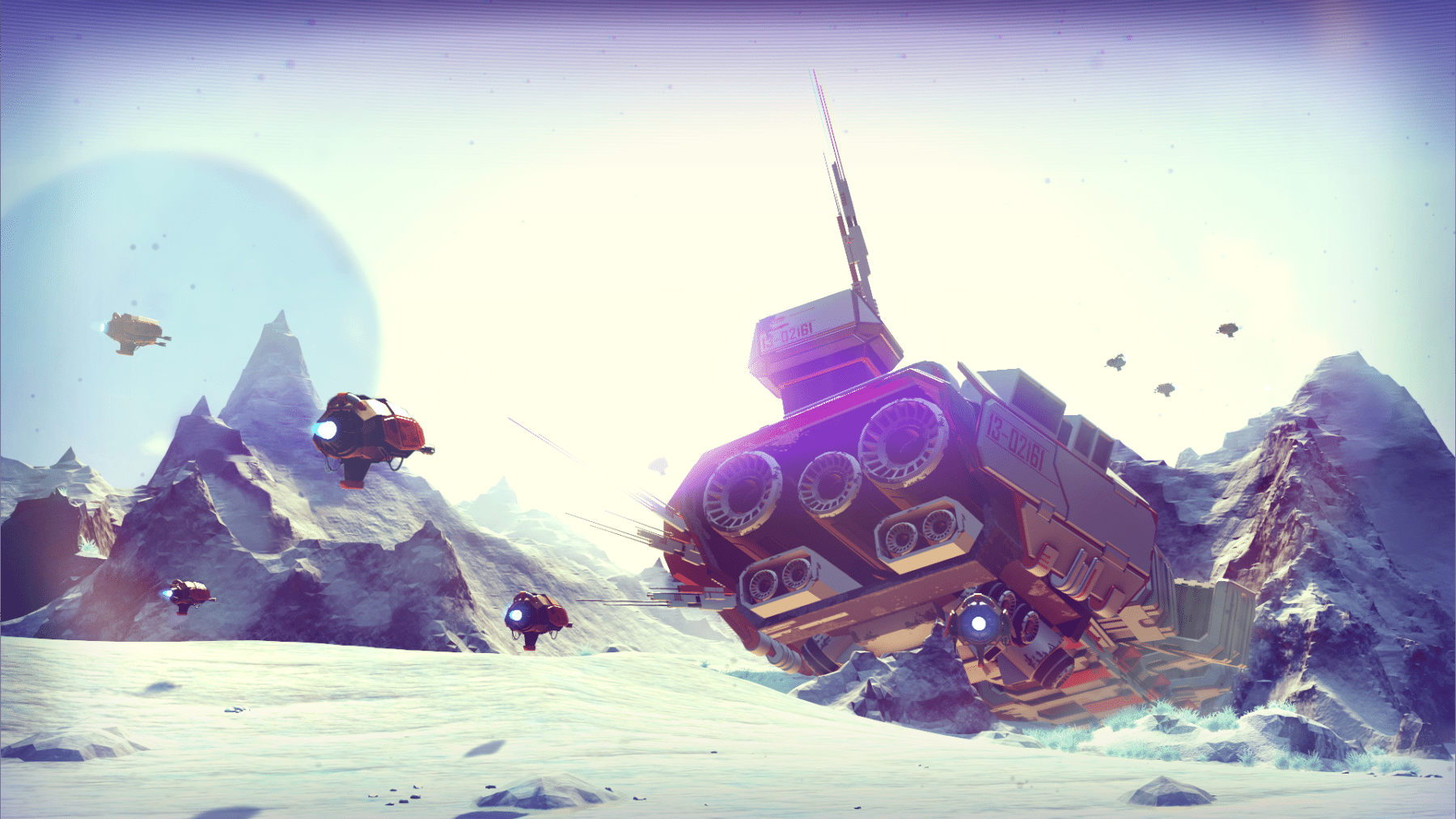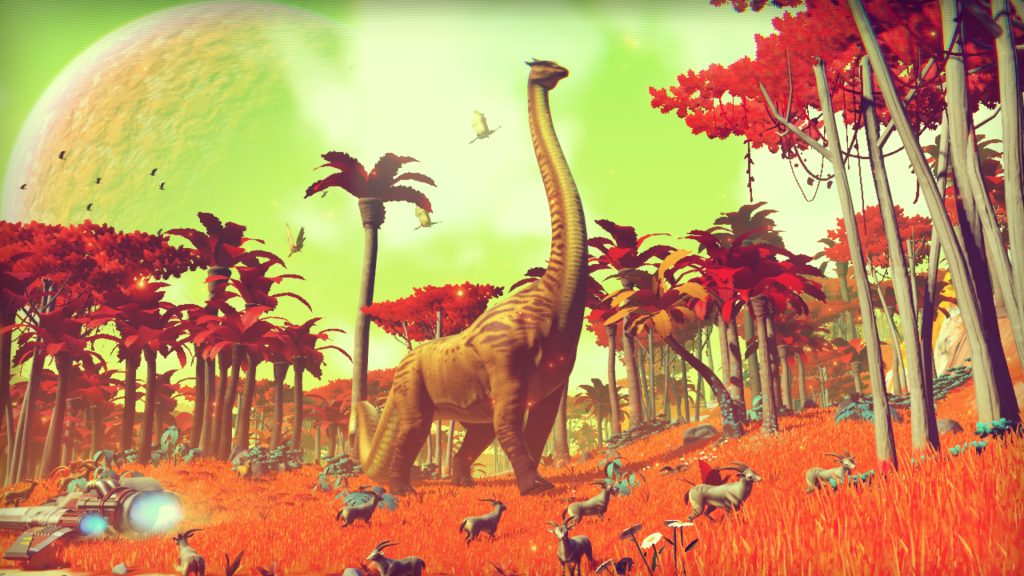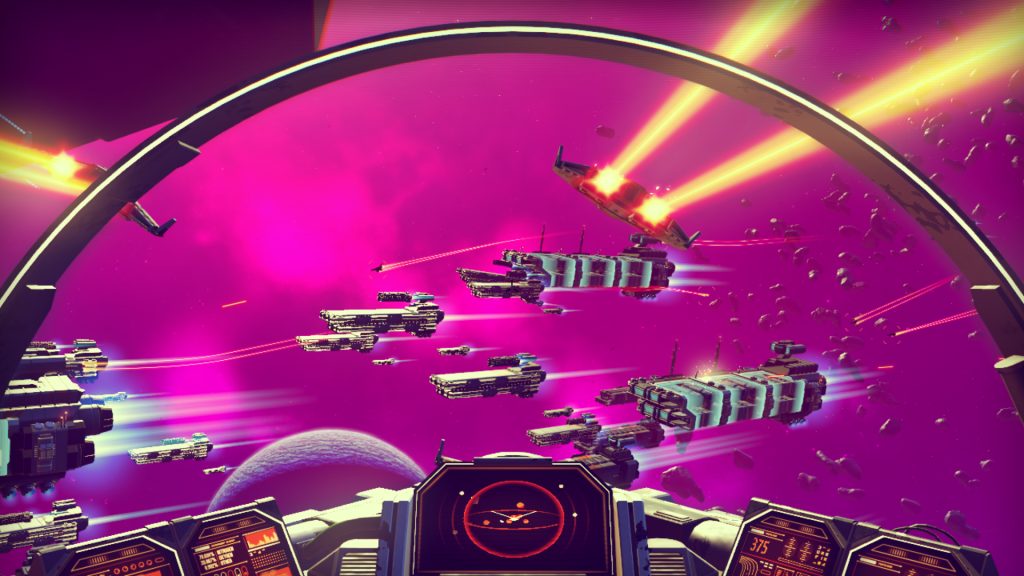A look ahead to No Man’s Sky
Platforms: PS4, PC
Release Date: 2015
Developer: Hello Games
“Space is big. You just won’t believe how vastly, hugely, mind- bogglingly big it is.”
[divider]
As we delve further into an age of space exploration, the truth of the above Douglas Adams quote has never been more apparent. The Kepler space observatory alone has discovered thousands of extraordinary systems and exoplanets in recent years (such as the catchily named TrES-2b, a pitch-black gas giant that guzzles 99% of the light that hits it, or 55 Cancrie e, a super-Earth with a diamond surface)- all within just a tiny portion of the Milky Way. It’s more clear than ever that there are countless galaxies, stars and planets waiting to be explored. This exciting and awe-inspiring concept is the principle reason why Hello Games’ No Man’s Sky has the potential to be one of the biggest games of 2015.
Players could also be able to visit hundreds of planets without ever encountering another human being
No Man’s Sky is a space exploration game that tasks players with discovering alien worlds in a procedurally-generated universe. There is no overall story to follow- it’s just you, your (initially awful) spaceship, and an uncharted universe to explore. What you do is completely up to you- players can spend their time finding resources and weapons; participating in space battles; fighting predatory creatures that view you as an easy lunch; engaging in space piracy or simply wandering around the varied ecosystems of the planets you encounter. These range from desert worlds with giant underground worms to tropical rainforest planets inhabited by dinosaur-like species. However, what sets this game apart from other similar titles is its enormous scope and ambition. In fact, there are as many as 18 quintillion planets in Hello Games’ universe.
In case you hadn’t realised, 18 quintillion is a mind-bogglingly big number. So big in fact that it would take you roughly 5 billion years if you were to set foot on each planet even for just a second. This incredible feat is achieved through the game’s use of complex algorithms. When you discover a new planet its features, fauna and landscape are generated automatically. It can then be visited by other players. The algorithms ensure that planet generation will adhere to set principles and won’t be completely random- for example, planets generated close to the Sun will be scorched, barren worlds. This intricate network of systems ensures that there are a vast range of worlds to explore, all of which follow certain scientific principles and logic to prevent chaotic randomness.
Due to the vastness of the game’s shared universe, it is unclear how the multiplayer aspect of the game will work. Even the developers are unsure. Programmer Sean Murray said in a recent interview that they “…don’t know if people will spread evenly out across the universe, or whether they’re going to corral into areas that have already been explored, whether they will form little trade routes… or whether it will be totally random”. So the possibility exists for trading routes and systems between players, but players could also be able to visit hundreds of planets without ever encountering another human being. At this stage, it is hard to predict what the game’s multiplayer experience will entail, but Murray has cited Journey, rather than space MMOs, as an inspiration for the game’s multiplayer.
Another interesting aspect of No Man’s Sky is its bright, vibrant and slightly surreal art style, which provides a stark contrast to the dark and gritty science fiction titles that dominate the modern market. According to Sean Murray, the art style was chosen to capture the vibrancy and excitement of 1960’s science-fiction and to be reminiscent of a sci-fi book cover. The end result is a particularly beautiful style, which succeeds in capturing the wondrous nature of space travel as envisioned by earlier generations.
However one important question looms over No Man’s Sky. Certainly the game’s biggest draw is the prospect of traversing a near-infinite universe but will this be stimulating enough to maintain interest in the game? Will the 18 quintillion planets be varied enough to be worth discovering? In a recent interview, Murray suggested there are action elements within the game by stating “There is a malevolent force in the universe that does provide a lot of combat and more core gameplay”. Hopefully this, along with space battles and potential interaction with other players, means that the game will remain engaging when the novelty of exploring has worn off (if it ever does)
If the game delivers on its promise of an endless universe, No Man’s Sky has the potential to be one of the biggest games of 2015. For me, it captures the excitement of the idea that there are billions of stars and planets out there waiting to be discovered. Every time you play, you are almost certain to come across a new planet or species that no one has seen before. For this reason, No Man’s Sky deserves your attention and is one of my most anticipated games of 2015.
[divider_top]
![]() Are you counting down the days until No Man’s Sky launch? Let us know on our hailing frequency (Twitter) at @Boargames
Are you counting down the days until No Man’s Sky launch? Let us know on our hailing frequency (Twitter) at @Boargames



Comments (1)
If you spend 1 second on each planet, the time to visit all of them will be 2^64/(3600*24*365.2425) = 584 554 049 254, so almost 585 billions years. And this article does not provide any new information by the way.